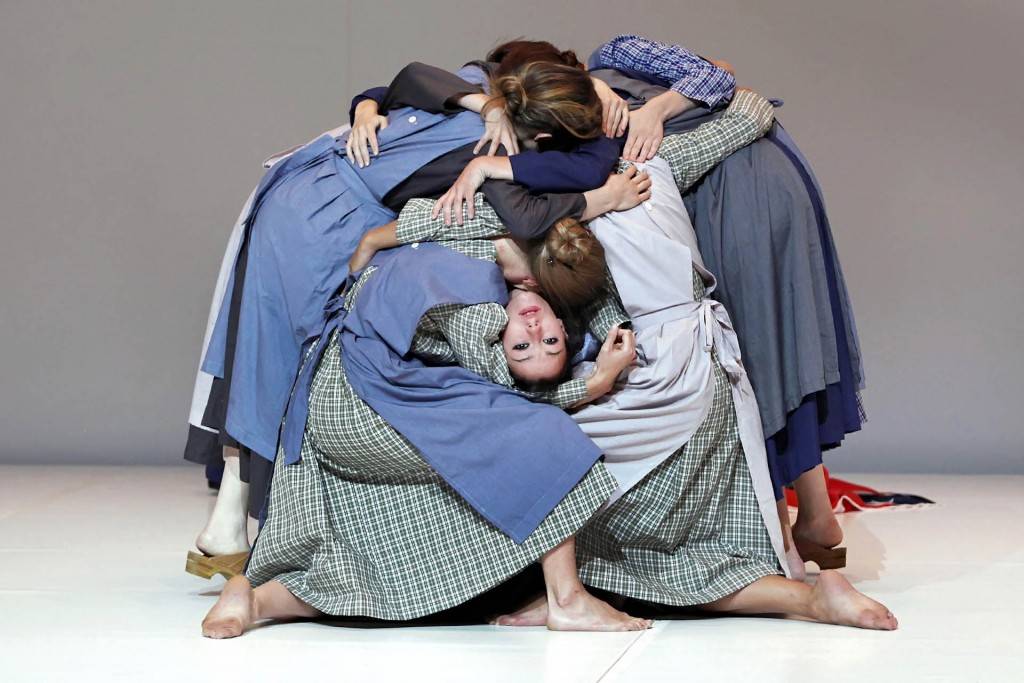Hans-Thies Lehmann
Hans-Thies Lehmann, a renowned theater scholar currently teaching at the University of Kent, UK, is the author of Postdramatic Theatre (1999), a groundbreaking study of post-1960s forms and aesthetics.
The resonance of my book Postdramatic Theatre surprised me. Its immediate function was not only the provision of a series of perspectives and concepts that would allow current developments in theater to be better theorized. The study was to engender a more accurate discourse around current theater practices that often appear strange, difficult to grasp conceptually from the point of view of “traditional” theater practice. I am glad to have contributed a little to opening new ideas in theater in such different theater cultures as those of Brazil, Japan, or Russia. Ideas, concepts, and terms, however, often quickly take on a life of their own. I wish today, therefore, to point to some aspects of the term postdramatic that should not be neglected.
-
I first used the word postdramatic in 1991 in a comparison of ancient tragedy, which I described as “predramatic” (because it is not dramatic in the sense that has prevailed since the dominant Renaissance paradigm of theatrical reality), and the theater of the present. I think that this wider theoretical and historical dimension of the concept received too little attention; instead people focused on questions of whether there should be a post-postdramatic or a neodramatic or whether one should not speak overall only of performance and so forth. I believe, however, that one should have in mind the actual dramatic theater tradition in order to better survey one’s own theater landscape. It becomes apparent then that indeed new theater idioms will continue to emerge but that they will tend to remain altogether postdramatic.
-
Postdramatic Theatre could and can be (and is indeed) read very differently depending on the culture, the tradition, and the current “scene” of the particular theater of the region: for example, as a critique of the dominant European theater model; or as a practice allied with performance experiments in visual art; or as a critique of a conservative theater practice that remains comfortably secured within the never-questioned frame of a theater of representation.
-
The book was an attempt to theorize the political in theater in the time of the so-called postmodern more from the perspective of its forms of language and the self-reflection of its praxis and less as an illustration of directly political themes. Therefore it saddens me when I occasionally encounter a conceptual opposition of “political” and “postdramatic,” and I hope that this false opposition will no longer be asserted. While theater is not politics, postdramatic theater entertains necessarily a relation to the political. To say it with an oft-quoted formula: it is not about doing political theater but about doing theater politically.
-
I believe that the theater and art in general are moving away from a once highly productive value, the autonomy of art, and moving toward a different idea: to see art and theater as a “mixing” [Legierung] of aesthetic praxis with other social forms of praxis that cannot be judged or even discussed in purely aesthetic terms. Therefore I welcome collaboration between the discourse on theater today and that of philosophical and political theory, a collaboration that can enhance the understanding of theater abandoning a purely aesthetic silo and that is able to perceive without prejudice art and theater in pedagogical, social, political forms of praxis.
-
Because the book treats the new means, or treats in a partly new way the means used by theater praxis, and discusses the text only marginally, the postdramatic was misunderstood as a rejection of the theater of the text overall. Its theme is, however, the analysis of the truly “dramatic” expansion of that which can be understood under the concept of theater. This concept includes now, for example, dance theater, or performance; installation works, or a walk through a city; theater presents itself as close to a rehearsal, as an exhibition, or as a public debate. The focus of attention shifted away from the final theater product toward the process or the “situation” of theater as a social, live form of praxis that connects and involves every participant in the theater event, actors and visitors alike. Within such experiments, however, theater continues to work with language, with dramatic and nondramatic texts, with the document and writing. And theater remains a site of political consciousness and memory. In this regard I wish that the poetic-literary potential of postdramatic theater, the lyrical as well as the narrative power of the theatrical moment, would be further researched and developed.
- At present dramatic and postdramatic theater coexist. In view of media and technological developments, in view of concurrent mediatized performance, and in view of our increasing distance from bourgeois conceptions of “the human” (concepts that are at the heart of the form of dramatic theater), I am convinced that a return of drama to the center of theater life—which some critics are hoping for—is not to be expected. The future will belong only to such theater whose forms and material provide an authentic response to its time—artistically, politically, socially, and philosophically.
Translated from the German by Megan Hoetger and Aleksandr Rossman
For Further Reference
Troubleyn / Jan Fabre, Mount Olympus, 2015. Performance lasts 24 hours.
Forced Entertainment, Bloody Mess, 2004.
René Pollesch, Kill Your Darlings! Streets of Berladelphia, 2012. Volksbühne Berlin.
Einar Schleef, Verratenes Volk, 2000. Deutschen Theater, Berlin. Schleef’s last directorial work.
Societas Raffaello Sanzio (founded by Claudia Castellucci, Romeo Castellucci, and Chiara Guidi), Tragedia Endogonida, 2002–4.
Elfriede Jelinek, Die Schutzbefohlenen, 2013.
Heiner Müller, Bildbeschreibung, 1984.
Sarah Kane, 4.48 Psychosis, 1999.
Peter Handke, Die Unschuldigen, ich und die Unbekannte am Rand der Landstraße, 2015.


















































































